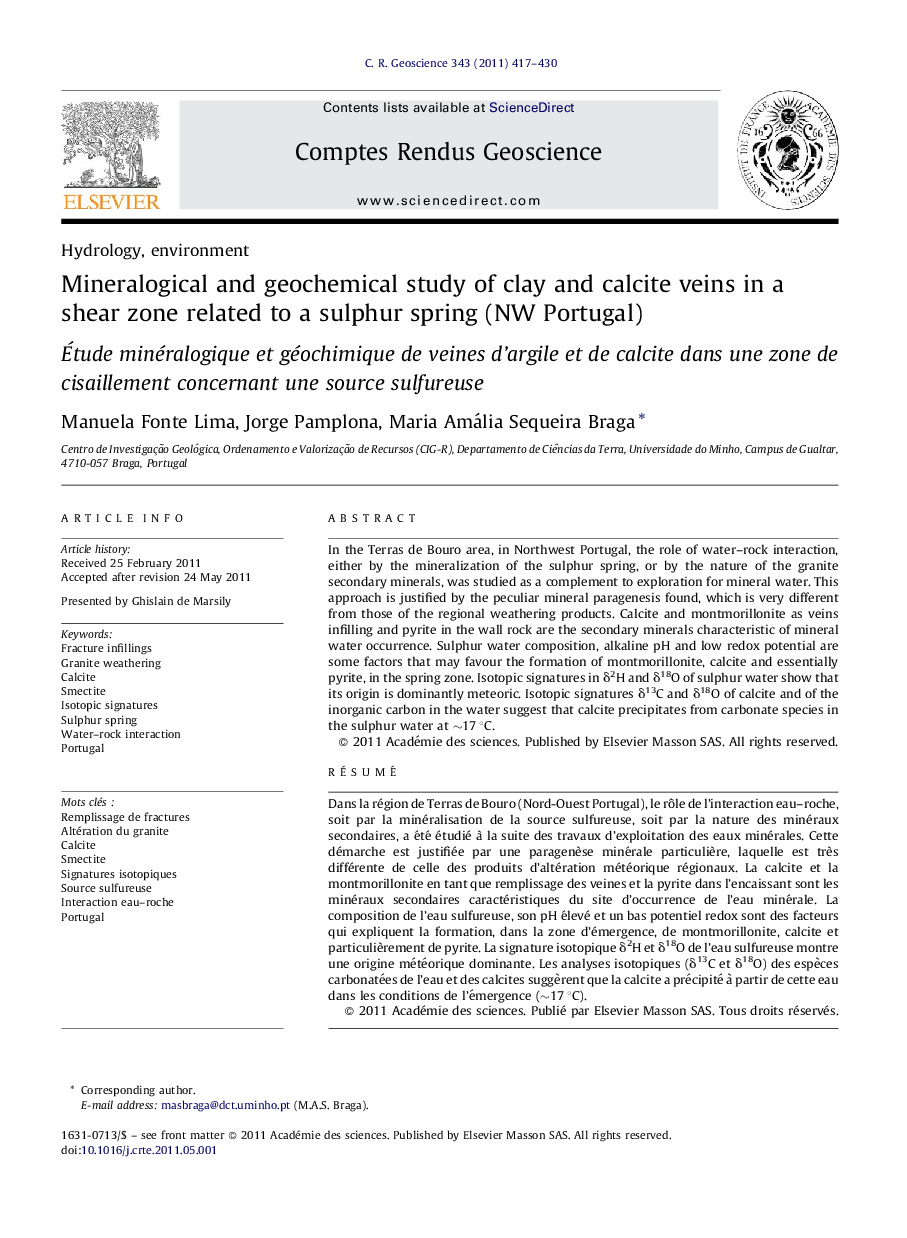| کد مقاله | کد نشریه | سال انتشار | مقاله انگلیسی | نسخه تمام متن |
|---|---|---|---|---|
| 4462408 | 1313496 | 2011 | 14 صفحه PDF | دانلود رایگان |

In the Terras de Bouro area, in Northwest Portugal, the role of water–rock interaction, either by the mineralization of the sulphur spring, or by the nature of the granite secondary minerals, was studied as a complement to exploration for mineral water. This approach is justified by the peculiar mineral paragenesis found, which is very different from those of the regional weathering products. Calcite and montmorillonite as veins infilling and pyrite in the wall rock are the secondary minerals characteristic of mineral water occurrence. Sulphur water composition, alkaline pH and low redox potential are some factors that may favour the formation of montmorillonite, calcite and essentially pyrite, in the spring zone. Isotopic signatures in δ2H and δ18O of sulphur water show that its origin is dominantly meteoric. Isotopic signatures δ13C and δ18O of calcite and of the inorganic carbon in the water suggest that calcite precipitates from carbonate species in the sulphur water at ∼17 °C.
RésuméDans la région de Terras de Bouro (Nord-Ouest Portugal), le rôle de l’interaction eau–roche, soit par la minéralisation de la source sulfureuse, soit par la nature des minéraux secondaires, a été étudié à la suite des travaux d’exploitation des eaux minérales. Cette démarche est justifiée par une paragenèse minérale particulière, laquelle est très différente de celle des produits d’altération météorique régionaux. La calcite et la montmorillonite en tant que remplissage des veines et la pyrite dans l’encaissant sont les minéraux secondaires caractéristiques du site d’occurrence de l’eau minérale. La composition de l’eau sulfureuse, son pH élevé et un bas potentiel redox sont des facteurs qui expliquent la formation, dans la zone d’émergence, de montmorillonite, calcite et particulièrement de pyrite. La signature isotopique δ2H et δ18O de l’eau sulfureuse montre une origine météorique dominante. Les analyses isotopiques (δ13C et δ18O) des espèces carbonatées de l’eau et des calcites suggèrent que la calcite a précipité à partir de cette eau dans les conditions de l’émergence (∼17 °C).
Journal: Comptes Rendus Geoscience - Volume 343, Issue 6, June 2011, Pages 417–430